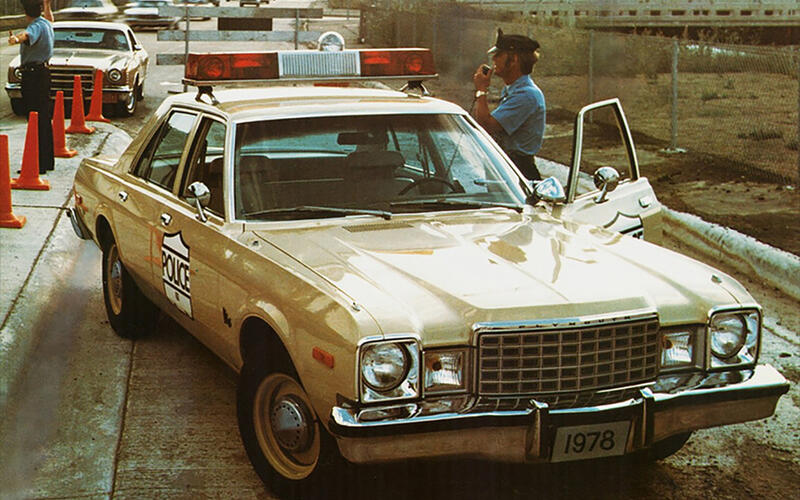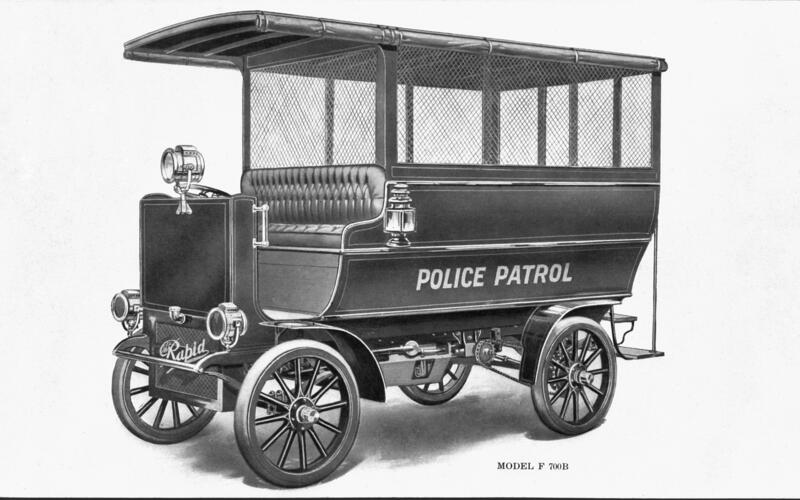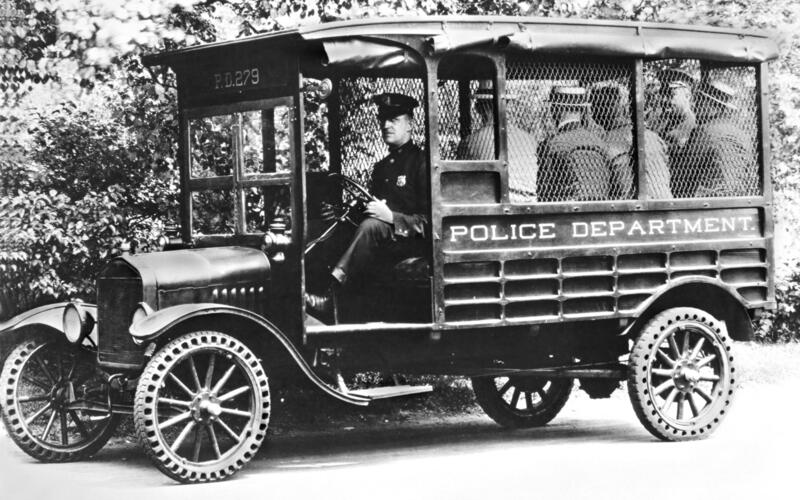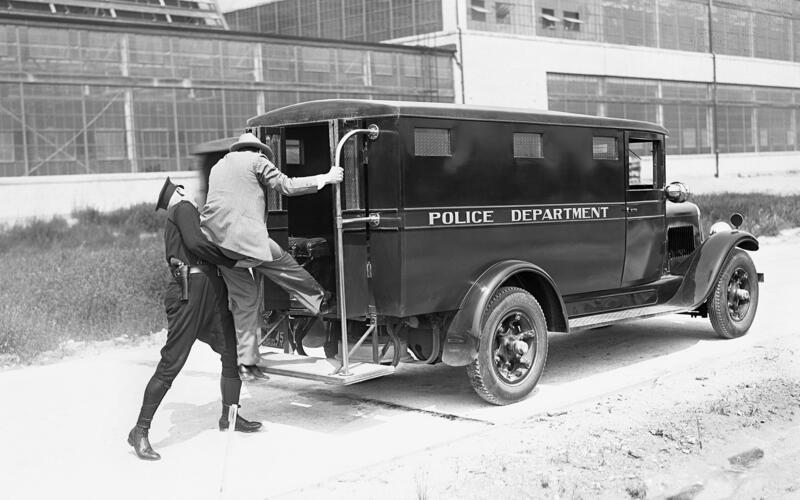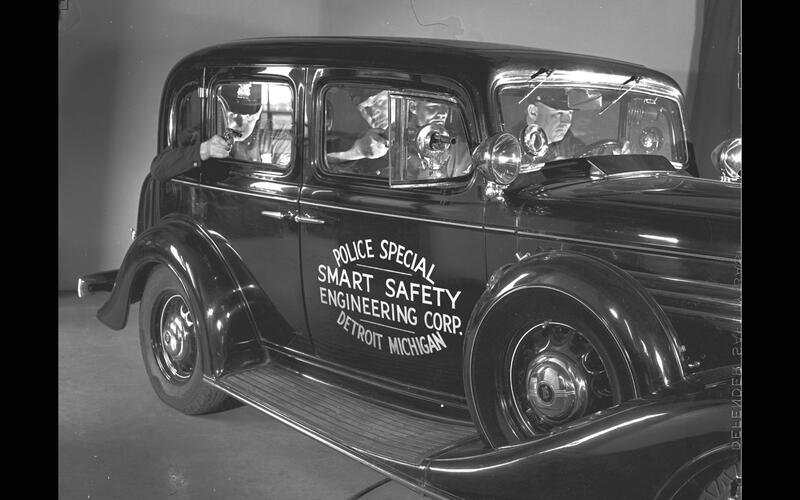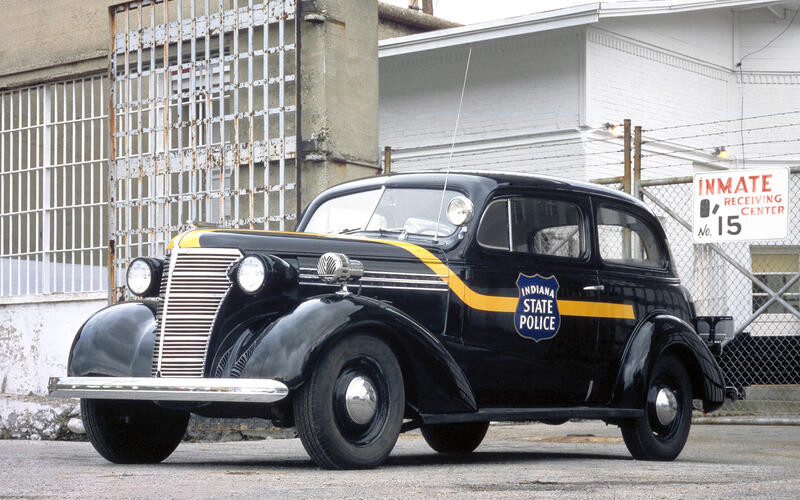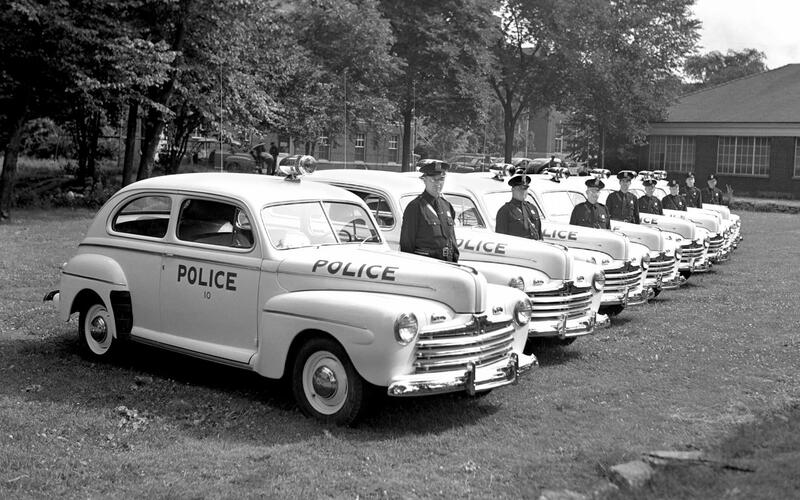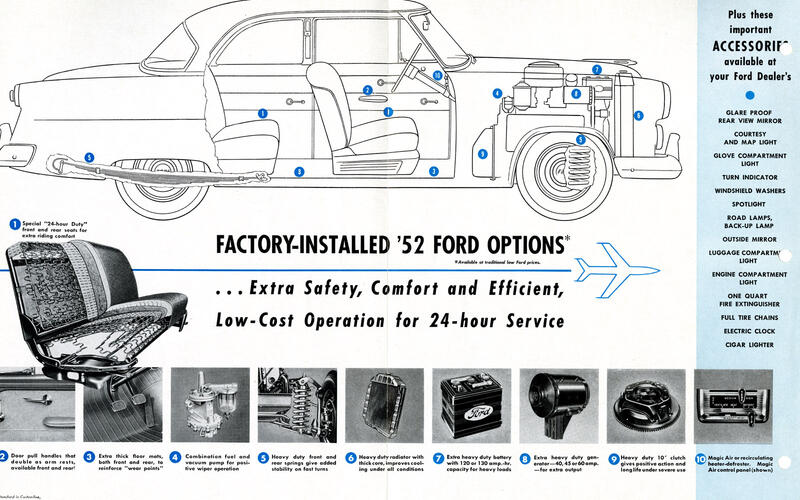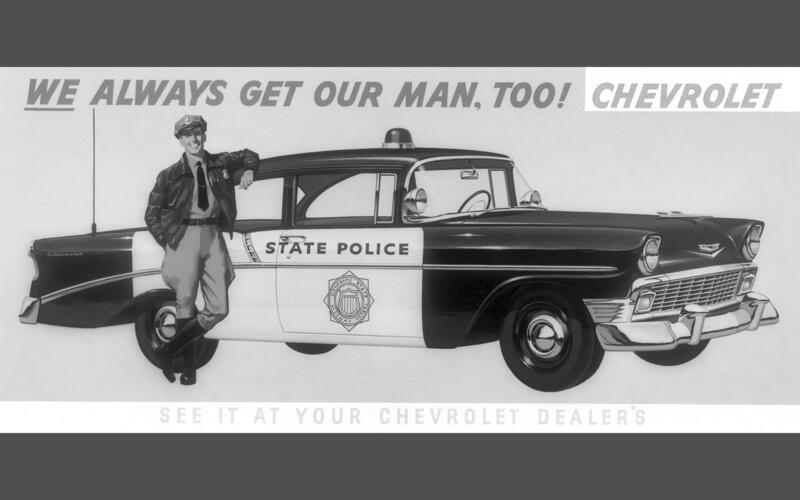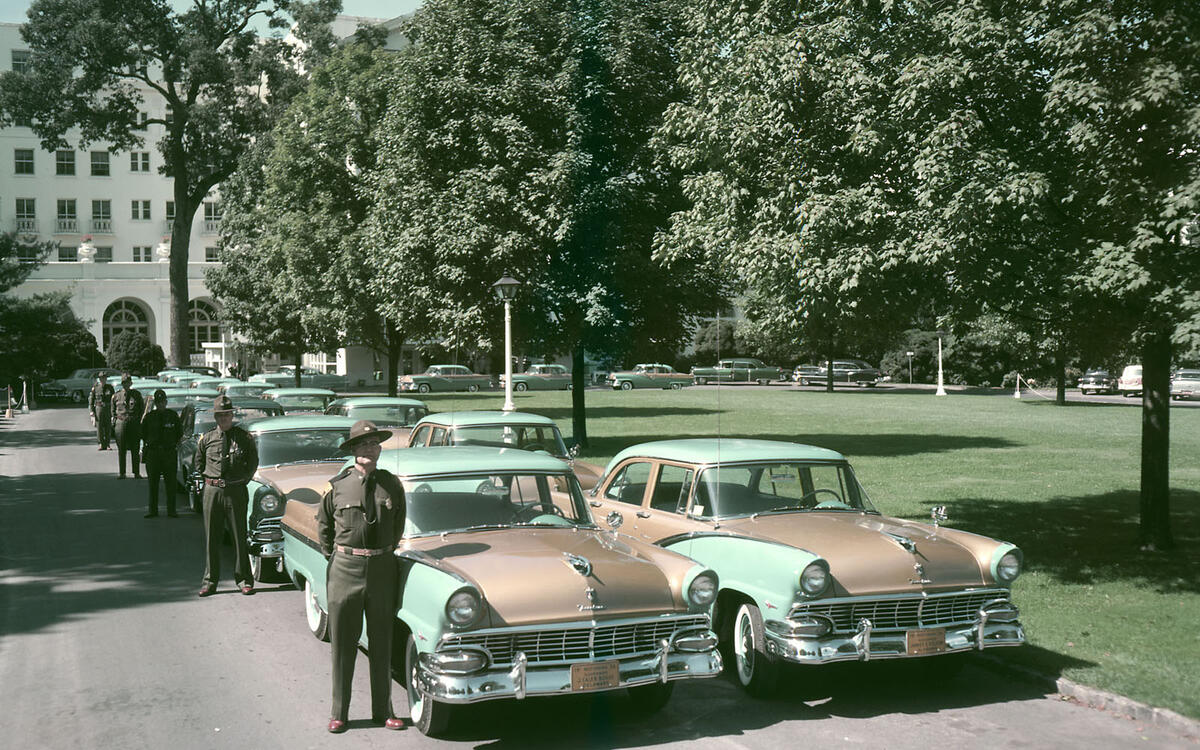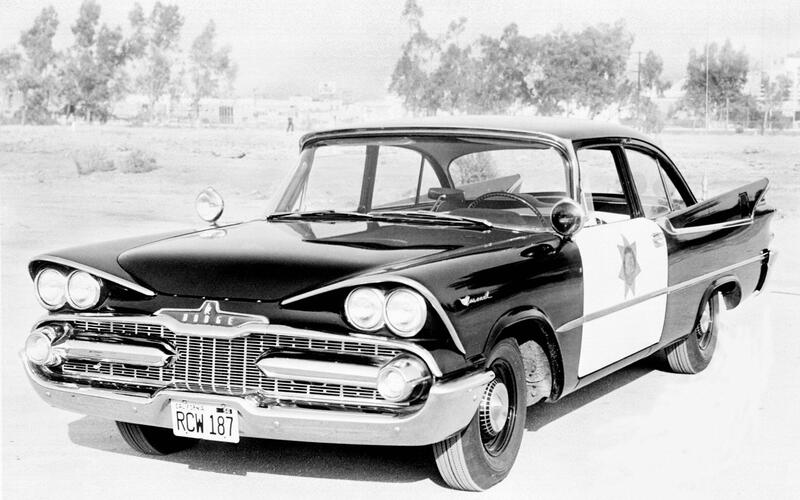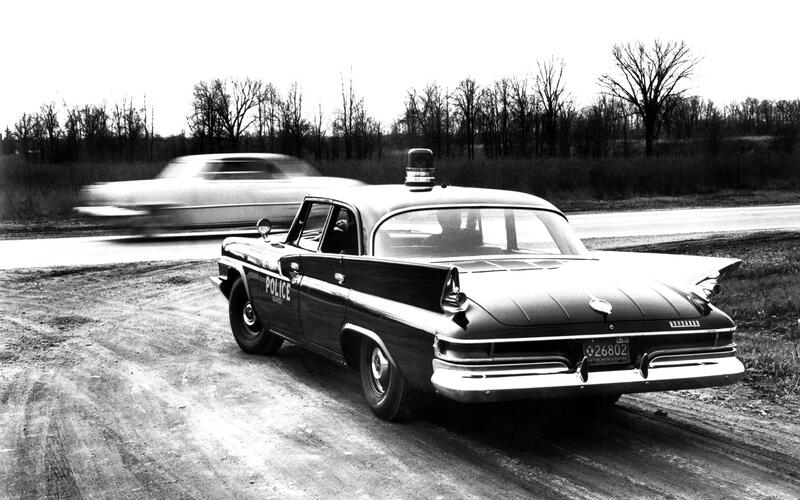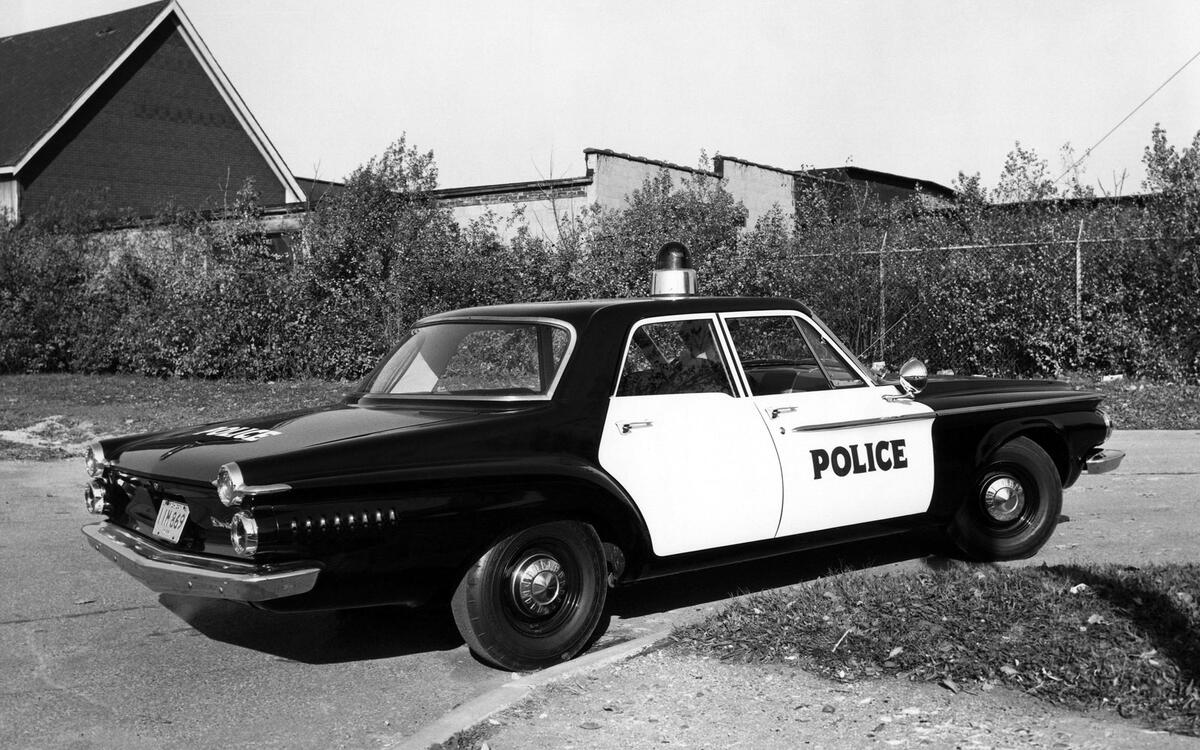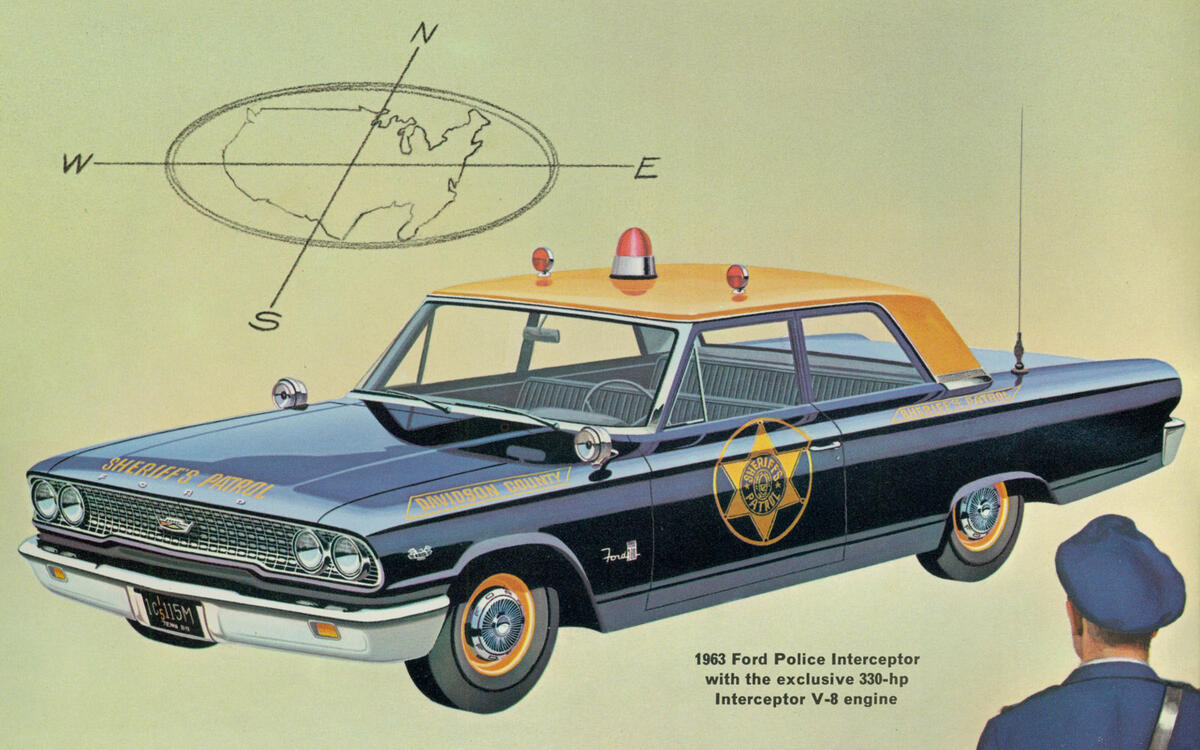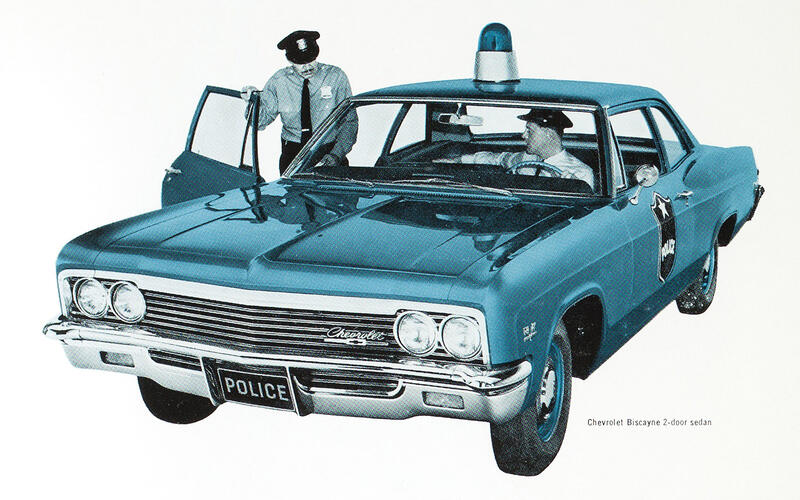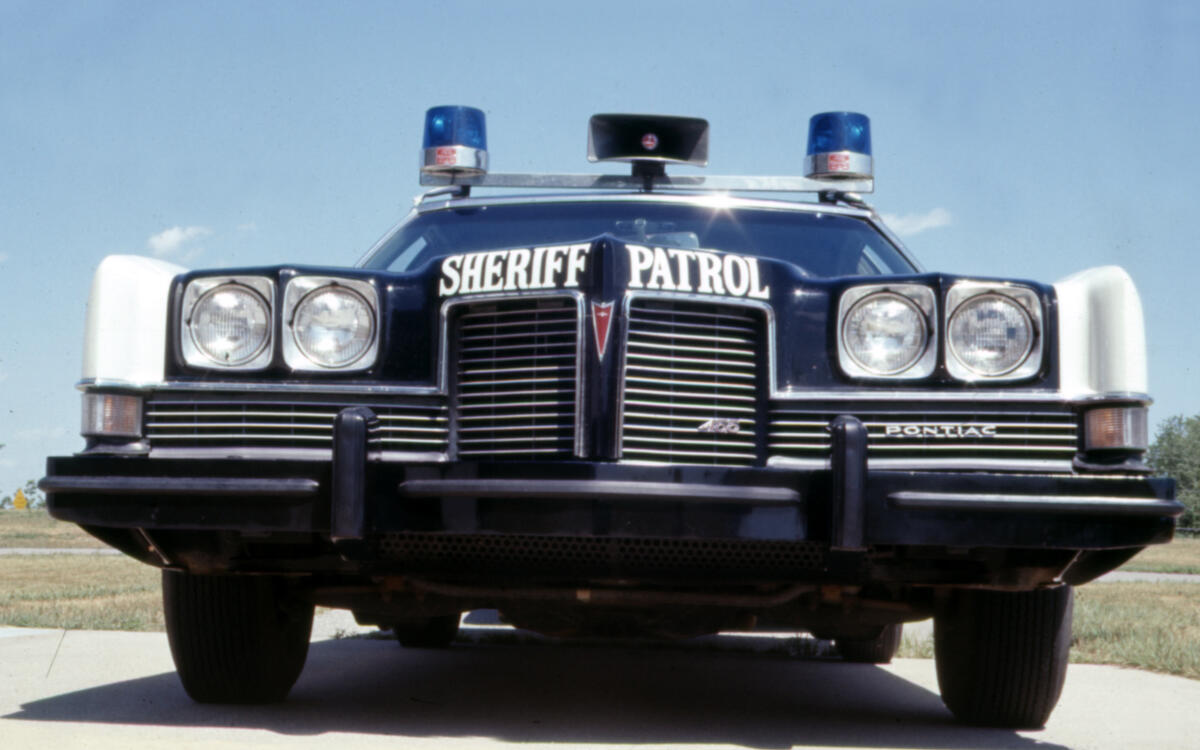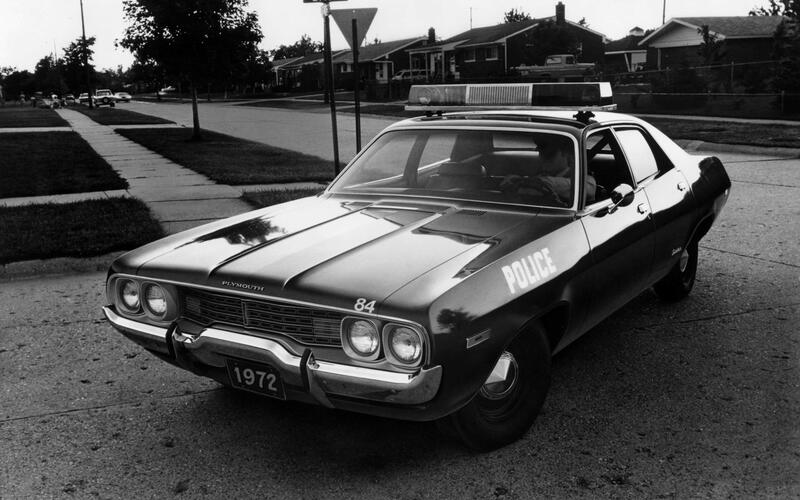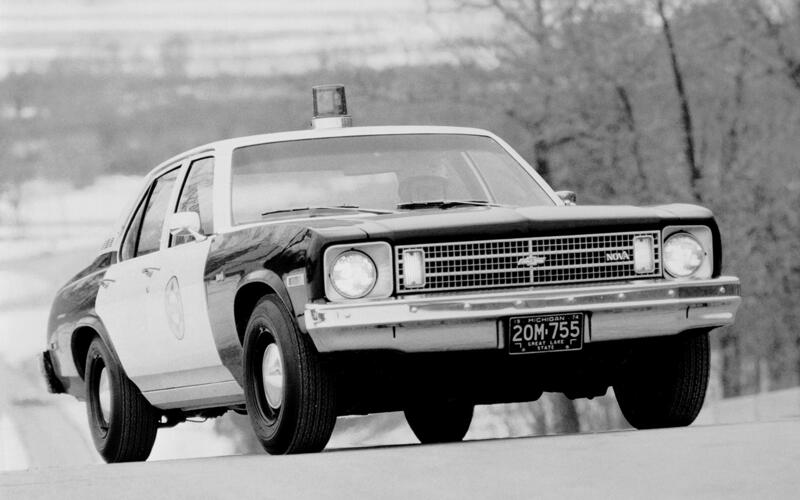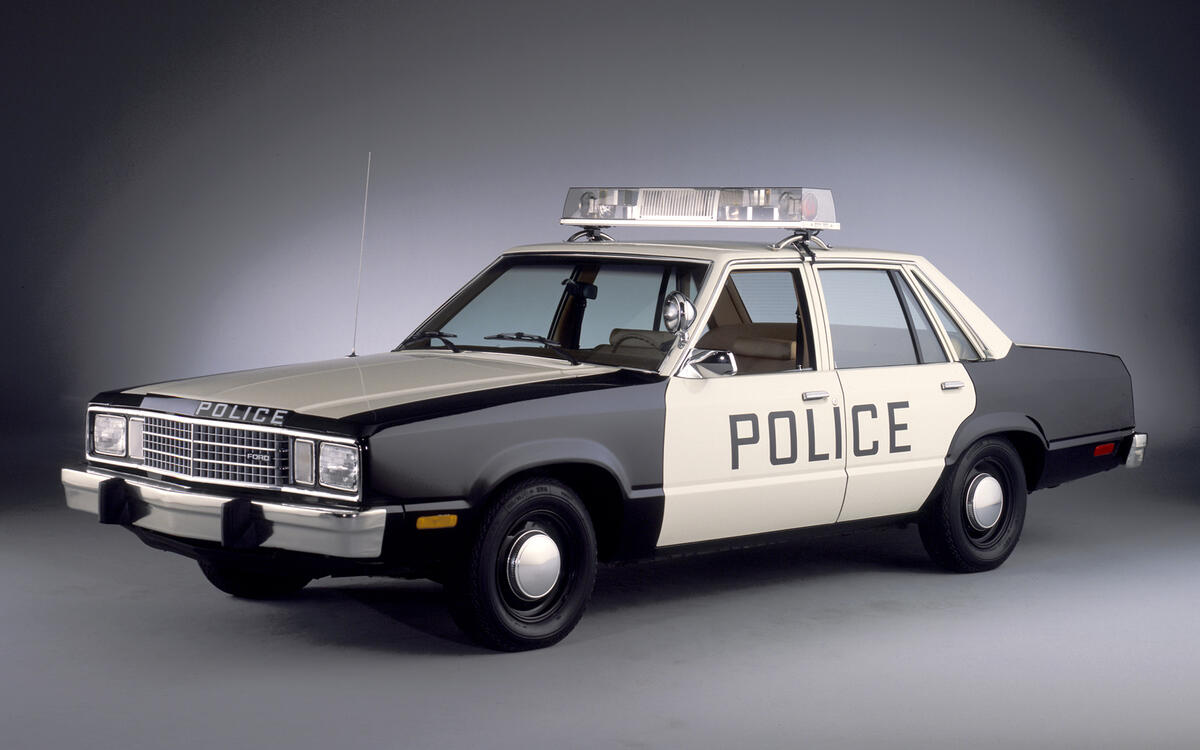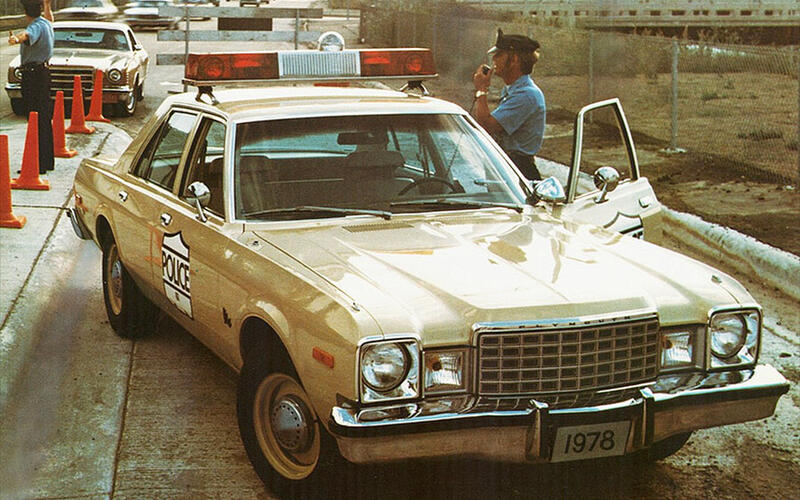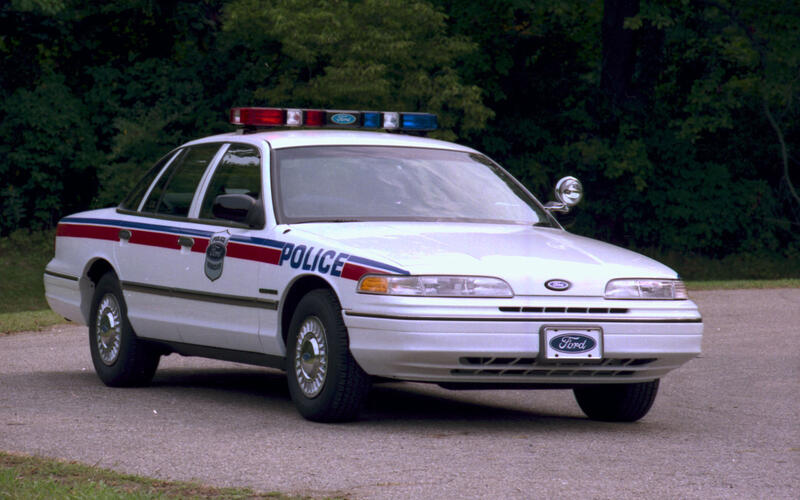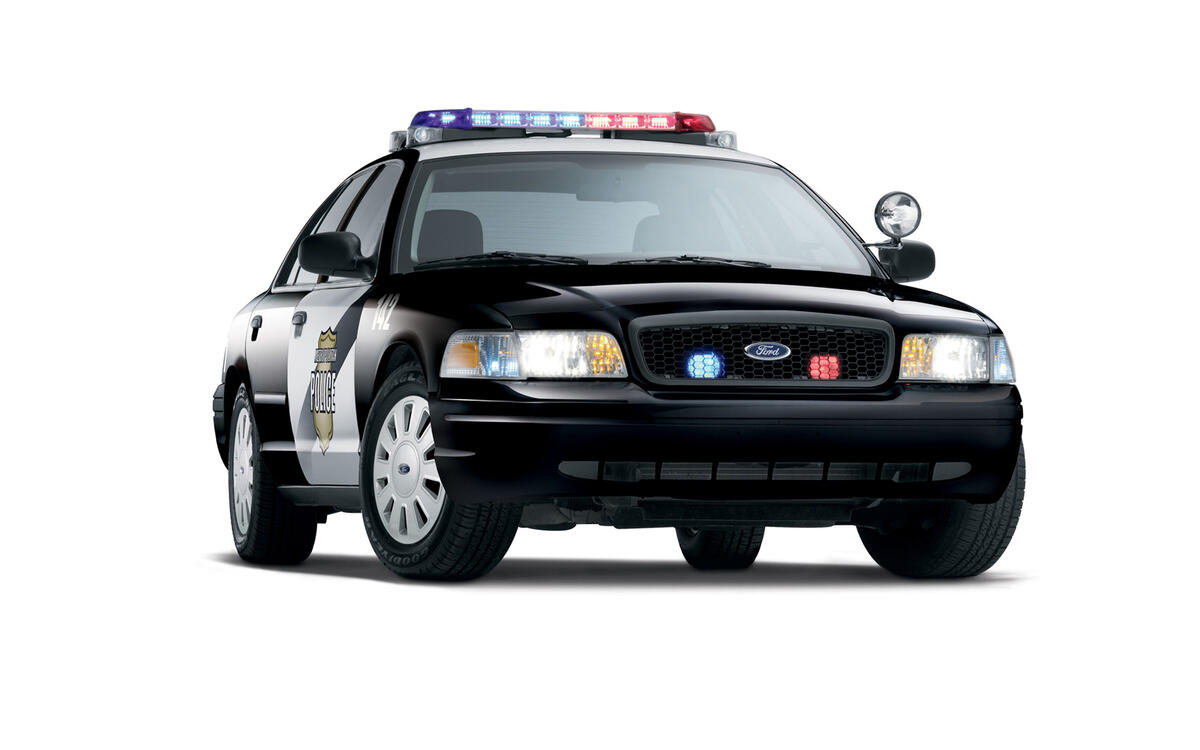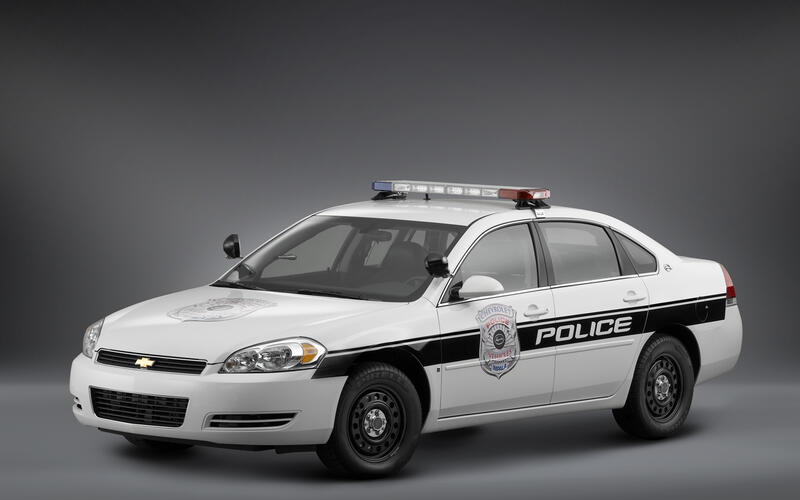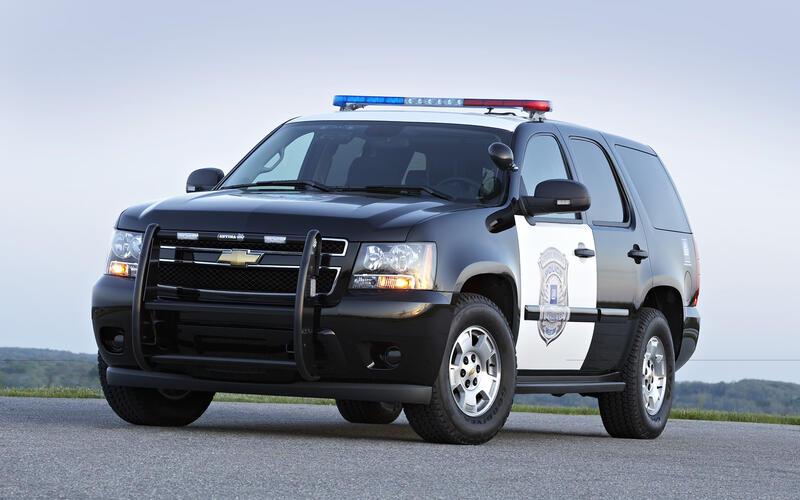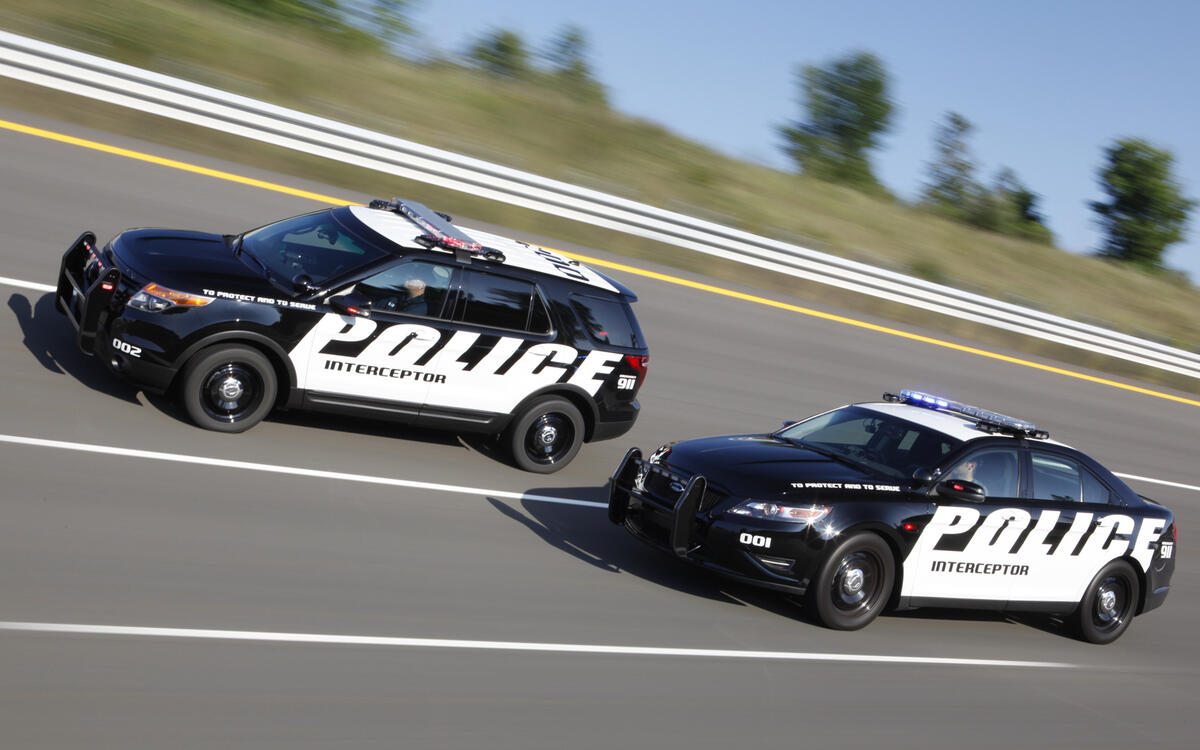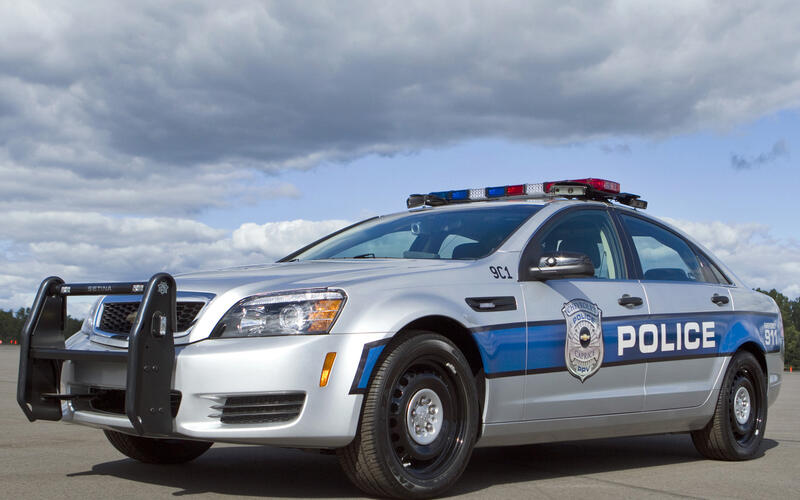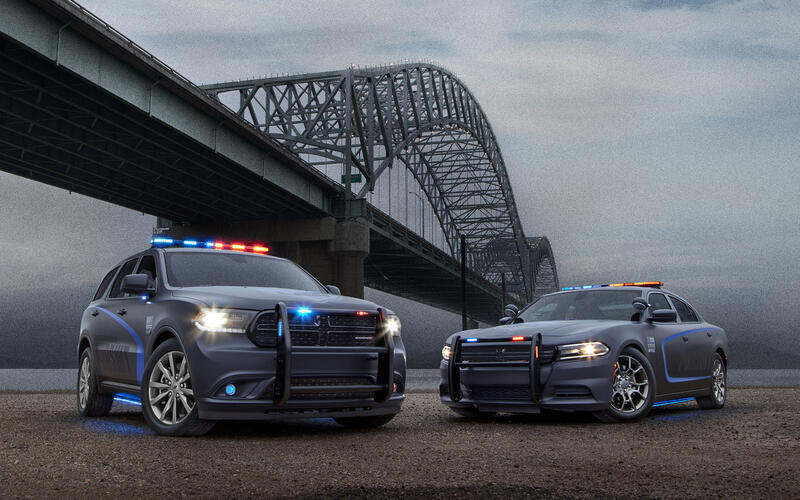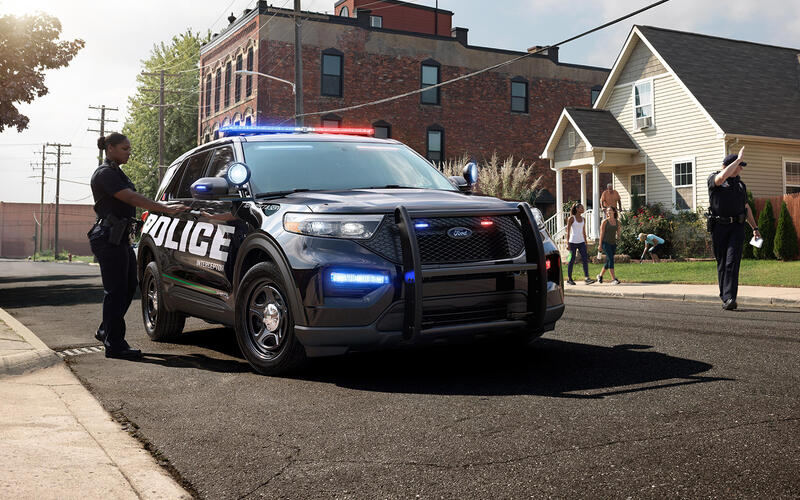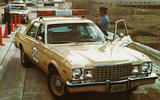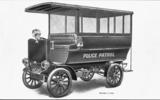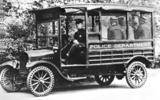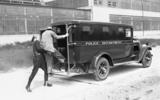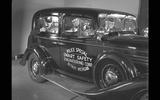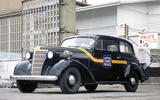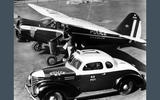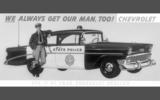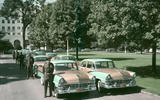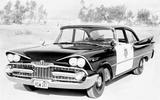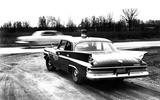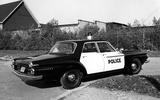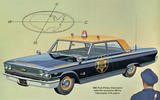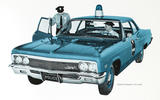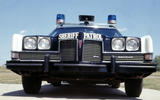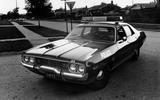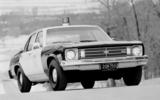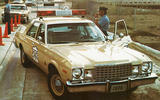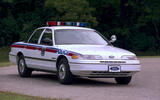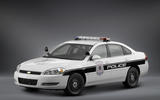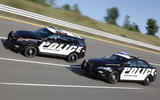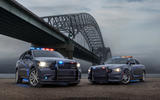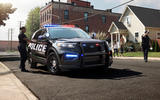 Slide of
Slide of
Who doesn’t like a police car?
Well, maybe the bad guys, but the rest of us are suckers for a big sedan with flashing lights, buzzing radios and tire-squealing V8 power.
Here we take a look at classic US cop cars like this 1978 Plymouth Volaré, as well as going under the skin of latest high-tech police models from Chevrolet, Dodge and Ford. And witness a sea-change as the traditional full-sized police car is increasingly replaced by a SUV. But before that moment, we have some fine memories:
 Slide of
Slide of
Rapid Model F 700B Police Patrol Wagon (1910)
The history of police cars is almost as old as the car itself. One of the earliest is believed to be an electric wagon that patrolled the streets of Akron, Ohio from 1899.
Truck maker, Rapid Motor Vehicle Co. was acquired by GM in 1909. This Model F 700B Police Patrol Wagon dates from 1910, two years before the Rapid name, like Reliance, was replaced by GMC.
 Slide of
Slide of
Ford Model T Police Truck (1919)
In 1919, the Model T Ford shown here was being used as police transport in an unrecorded US location – just another of the myriad applications for the 15 million Model Ts produced between 1908 and 1927.
 Slide of
Slide of
GMC Cowl Chassis (1929)
Much like the chassis cabs of today, this 1929 GMC Cowl Chassis came from the factory with only frontal sheet metal. As was customary at the time, the buyer could have the rear section built by a third-party coachbuilder to suit their purposes – in this case, a reinforced van body for police prisoner transport.
 Slide of
Slide of
Buick Four Door Sedan (1935)
This 1935 Buick was adapted for police use with spotlights, gun ports and, most likely, bullet-proof glass, but Buicks of the period already came with safety glass – one of a number of engineering features that marked them out from the competition.
The straight-eight-powered 1935 models also boasted an accelerator starter and Knee Action independent front suspension. Knee Action was a pioneering coil-spring, short-long arm (SLA) design by one of the greatest names in vehicle dynamics, the Briton Maurice Olley (1889-1972). Having previously worked at Rolls-Royce, Olley would go on to develop the chassis and suspension of the C1 Corvette.
 Slide of
Slide of
Chevrolet Master Deluxe Police Vehicle (1938)
This Chevy from the Indiana State Police Department was powered by a 3.4-liter, six-cylinder engine. The police version was adapted from the standard Town Sedan, which sold more than 300,000 units in the higher-spec Master Deluxe version in 1938.
It’s not clear whether police departments appreciated the “important added convenience” of the “under-floor tool-box built into the luggage trunk”, as highlighted in contemporary advertising. But the pillar-mounted assist straps, “securely mounted top and bottom”, might have been handy for clinging on during high-speed pursuits!
 Slide of
Slide of
Plymouth P8 Coupe New York Police Car (1939)
Plymouth began supplying cars to police departments in the early 1930s. The 1939 P8 Coupe pictured here alongside a Stinson Reliant airplane served with the New York Police Department and is painted in the distinctive ‘NYPD Green’ colors of the period: white roof, green body sides and black fenders. The NYPD retained the scheme until 1972.
 Slide of
Slide of
Ford Police Cars for Dearborn, Michigan (1946)
When civilian car production resumed after World War II, Ford’s 1946 model was largely identical to its 1942 offering. Among the police departments to take delivery was Ford’s home city of Dearborn, Michigan. Under the hood was a 3.9-liter Flathead V8 that produced around 100 hp.
“Ford’s out front for police car service,” claimed an advertisement from the time. “A natural for speed, safety and comfort.”
 Slide of
Slide of
Ford Police Car Brochure (1952)
This brochure highlighted the features available on the 1952 Ford Police Car, which was powered by a 125bhp ‘Interceptor’ V8. Options included special ’24-hour duty’ seats for extra riding comfort, extra-thick floor mats, uprated suspension springs, radiator, battery, clutch and generator, and – most important – a cigar lighter.
 Slide of
Slide of
Chevrolet 210 Series Police Car (1956)
The tagline for the 1956-model 210 was, “They don’t get away when you’ve got a Chevrolet!”. “Chevy’s built for the road,” read an advertisement, “with a low center of gravity, extra-wide-apart rear springs, a near frictionless steering gear and balanced weight distribution”.
Add in a high-efficiency V8 or six-cylinder motor, and the result was said to be a squad car that was, “strong and silent, hot and easy to handle!”.
 Slide of
Slide of
Ford Fairlane Interceptors (1956)
These Ford Fairlane-based 1956 Interceptors with ball-joint front suspension saw service in Charleston, West Virginia. The special ‘Interceptor’ Y-8 engine (a V8 with deep skirting) boasted 215bhp. ‘Lifeguard’ design features such as special door latches, recessed steering wheel and dashboard padding helped keep cops safe.
Marketing from the period suggested that the Fairlanes were, “Preferred by Law Enforcement Agencies Everywhere”.
 Slide of
Slide of
Dodge Coronet Police Car (1959)
Dodge’s first official police package was offered on the Coronet from 1956. The 1959 model, shown here, came with a 310bhp Hemi V8, push-button TorqueFlite automatic transmission and the distinctive, be-finned ‘Forward Look’ styling pioneered by Chrysler design chief Virgil Exner (1909-1973).
“They go from standstill to highest pursuit speeds in a flash,” crowed an advertisement, “handle, corner and stop like no other car you’ve ever seen or driven.” The Coronet was one of many contemporary police designs to feature in the popular TV series Highway Patrol, which was created in response to the success of Dragnet and ran from 1955 to 1959.
 Slide of
Slide of
Chrysler Enforcer Police Car (1961)
Chrysler’s 1961 model, dubbed Enforcer and shown here in the colors of the Detroit Police, was based on the Windsor/Newport sedan and lasted until 1964. It had a maximum speed of 130mph from its 6.3-liter (383ci) Dodge ‘B’ V8.
 Slide of
Slide of
Dodge Dart Police Sedan (1962)
In the early 1960s, Dodge had police vehicles working in 22 US states. Advertisements at the time championed the Dodge’s ability to start quickly in the cold weather of Alaska and Minnesota and tame the rough roads of Montana. “The long Dodge wheelbase and torsion-bar suspension [could] calm a nervous and jerky back road like a tranquilizer,” apparently.
This unconventionally styled 1962 Dart sedan rode on the then-new ‘B’ unibody platform that would endure, with updates, right through the 1970s.
 Slide of
Slide of
Ford Police Interceptor (1963)
By 1962, Ford had no fewer than 26 different police models on sale, including 2- and 4-door sedans and 10 wagons. Top of the 10-strong Galaxie line was the Interceptor (pictured here as a 1963 model) with a 330bhp engine and “hair-trigger performance”, but lower-powered alternatives were available, including an all-new, six-model Fairlane-based series.
Ford was wooing law enforcement agencies with extended routine service intervals, self-adjusting brakes, body anti-corrosion protection and special paint.
 Slide of
Slide of
Chevrolet Biscayne 2-door Police (1966)
There were no fewer than five V8 engine options in Chevrolet’s 1966 line of police cars. The units ranged in output from 390bhp for the 427 (7-liter) Turbo-Jet down to 195bhp for the Turbo-Fire 283 (4.6-liter).
Heavy-duty components such as brakes, suspension and Positraction (limited-slip differential) were all available to order on 2- and 4-door Biscayne sedans, and wagons, with Chevrolet prompting police departments to “investigate” the “hot police cars” at their local dealer.
 Slide of
Slide of
Pontiac Catalina Four Door Sedan Police Car (1971)
We’re not sure that the distinctive point in the nose of 1971 Pontiac Catalinas would score well in today’s pedestrian crash tests, but it certainly added presence to the police Catalinas of that year. Yet the car was safer on the inside than earlier designs, with padded instrument panels and front-and-rear lap belts mandatory since 1967 models.
Pontiac restyled the full-size Catalina for 1969 with a more squared-off look and lengthened the wheelbase to 122in. Under the skin however, the car was largely unchanged from 1965, when the Catalina had received a new three-speed automatic transmission and updated engines.
 Slide of
Slide of
Plymouth Satellite Police Car (1972)
The third-generation Plymouth Satellite was introduced in 1971. This B-body mid-sized vehicle replaced the Belvedere and was available with the ‘A38’ police package. In 1972 it was being advertised as, “Built to take you wherever you must go”.
The 1974 Satellite was one of half-a-dozen different police cars that co-starred in the CBS TV series Dukes of Hazzard at various points. These included the Satellite’s replacement, the Fury, which was part of a range of vehicles that established Plymouth as the most popular US police vehicle brand on sale in the late-1970s.
 Slide of
Slide of
Chevrolet Nova Police Vehicle (1975)
The final generation of rear-drive Nova proved to be a popular choice with police users at a time when fuel economy and emissions performance were on every public fleet’s radar. Chevrolet championed the low whole-life costs of the compact Nova, which was selected for duty by police and sheriff’s departments in cities such as St Louis, Los Angeles and Madison, Wisconsin.
The Copo 9C1 police package included uprated tires, suspension, battery, generator and cooling system, a rear seat with improved knee and entry/exit room, and hard-wearing vinyl seat trim. A certified police speedometer marked in 2mph-increments was on the options list for the police Nova, which featured in movies including Gremlins.
 Slide of
Slide of
Ford Fairmont Police Car (1978)
The 1978 Fairmont was designed to challenge the police Nova for city or non-pursuit assignments. Ford claimed that, despite its status as a compact, the model had 90% of the head, leg and shoulder room of most large cars.
Powered by a 3.3-liter six or a 5.0-liter V8, the Fairmont Police Package had a reinforced shell for rough-road durability, unique springs, stabilizer bars, struts and shocks, and power rack-and-pinion steering.
 Slide of
Slide of
Plymouth Volaré Police Car (1978)
As the third member of the new generation of compact cop cars, Plymouth introduced the compact Volaré Pursuit for 1978, with the Dodge Aspen as its near-identical but slower-selling twin. Sales literature at the time described the Volaré Pursuit as, “tough, maneuverable, economical to buy, and comfortable – for the lawman’s long hours of duty”.
Under the hood was the 318ci (5.2-liter) V8, which made 157 hp in catalyzed form, or a 360ci (5.9-liter) 172 hp unit.
 Slide of
Slide of
Ford Crown Victoria Police Package (1992)
Ford highlighted excellent braking performance during the launch of the 1992 Crown Victoria, which succeeded one of the 1980s’ most popular police vehicles, the LTD Crown Victoria.
The Blue Oval claimed that in brake testing from 60mph by the Michigan State Police and Los Angeles Police Department, the Crown Vic’s ABS provided a stopping-distance advantage of more than 30ft over its nearest competitor. Around 25,000 of these police vehicles were made in 1992; production continued until 1997.
 Slide of
Slide of
Ford Crown Victoria Police Interceptor (2006)
The last generation of Crown Victoria-based Interceptor was introduced in 1998. Ford claimed at the time to have 85% of the North American police pursuit market. Powered by a 4.6-liter V8, the 1998 model was good for 150mph. Chassis upgrades to the body-on-frame design for pursuit use included larger brakes and steering and a Watt’s linkage rear suspension.
“Police tell us, ‘don’t let this car go away,’” said Bob Williams, Ford’s government fleet sales manager in 1998. “They want large sedans with rear wheel drive.” Production ended in 2011 however, by which time Police Interceptors accounted for almost all of but a handful of Crown Victoria production.
 Slide of
Slide of
Chevrolet Impala Police Vehicle (2008)
The Impala nameplate saw police service across several model generations. The ninth generation, which was in production 2006-16, was the last of the line. It was available with the both the 9C1 package (regular police use) and 9C3 (undercover or supervisor use).
Based on the LS grade, the police Impala featured familiar equipment such as heavy-duty steel wheels, a beefed-up cooling system and disabled rear door locks and handles.
 Slide of
Slide of
Chevrolet Tahoe Police Package (2010)
Chevrolet has been offering police versions of the body-on-frame Tahoe since the early-1990s. The full-size SUV is available in RWD or 4WD, and as a police pursuit (PPV) or special service (SSV) vehicle.
Pictured here is a third-generation Tahoe from 2010, which received a 6-speed automatic transmission that offered better fuel economy than its predecessor’s 4-speed. Another notable introduction was electronic stability control (StabiliTrak, in GM’s language), which seemed like a sensible safety move on a tall, aggressively driven SUV.
 Slide of
Slide of
Ford Police Interceptors (2010)
Ford first showed the current generation of Police Interceptor sedan as a concept in 2010, as production of the venerable Crown Victoria was nearing an end. In a departure from its predecessor, the Taurus-based Interceptor was V6-powered, with or without turbo, and is offered with FWD or AWD.
An interior designed specifically for police use includes stab-proof seat backs, redesigned seats to accommodate utility belts and a column shift to leave the center console free for modern aftermarket police equipment such as screens and laptops.
However, the Explorer-based Interceptor Utility now sells around three times as many units as the sedan. The redesigned 2020 version recently joined a police range that also includes the Fusion-derived Responder Hybrid, two F-150 pickups, an Expedition and a Transit.
 Slide of
Slide of
Chevrolet Caprice PPV Police Sedan (2012)
GM does not currently offer a police sedan, reflecting the declining popularity of sedans in both the North American vehicle market as a whole, and among police users. Instead, the lineup consists of Tahoe SSV and PPV, and a Silverado SSV pickup.
Chevrolet’s final police sedan was the Caprice PPV, a rebadged Holden. The car was imported from Australia from 2011-17 and revived a nameplate whose previous generations had been popular with law enforcement agencies. Holden also sold the car to police forces in Australasia and the Middle East, but sales ended when Holden’s Elizabeth, South Australia plant stopped making cars in 2017.
 Slide of
Slide of
Dodge Durango and Charger Police (2019)
Dodge entered the growing police utility market in 2018 with the V6 or 5.7-liter, 360bhp V8 Hemi-powered Durango Pursuit. Marketed as a 2019 model, the AWD Durango joins the popular Charger in Dodge’s police lineup.
Dodge’s SUV receives a bigger brake package with improved cooling and load-leveling suspension to cope with police work. On the inside, law enforcement systems are integrated into the Durango’s Uconnect 7.0in display.
 Slide of
Slide of
What’s next?
In 2017, Ford claimed that the SUV version of its Police Interceptor held fully 51% of the US police market; it sold 18,752 examples in 2019. Ford’s is in general retreat from the passenger car space – the Taurus died in 2019, and that meant the end of the Interceptor Sedan too.
Police forces are buying more SUVs, like the rest of us. So it does mean that the end is nigh for the police sedan we knew, understood and generally feared the sight of in our rear-view mirror. The glory days of the Big 3 police sedan are well and truly over. PICTURE: 2020 Ford Interceptor Utility Hybrid
Classic US police cars: law-enforcement muscle from the Detroit Big Three
Advertisement

